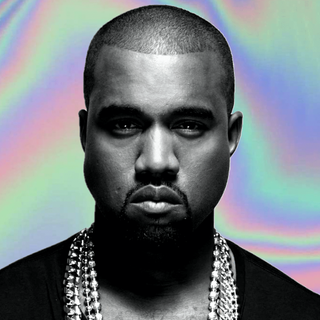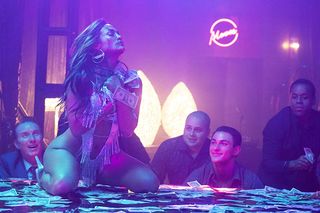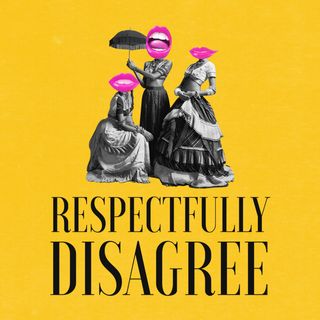
Men’s Preference For Strip Clubs Stems From Vulnerability
Engaging in sexual arousal around other men is also the ultimate bonding ritual, according to a sexologist.

Pop culture has portrayed a certain kind of image for the man who likes going to strip clubs — it’s the real estate or finance bro who is a cutthroat businessman by day, and a lewd, drooling, arrogant money-thrower at night. From 2019’s Hustlers portraying entrepreneurial strippers taking advantage of the lust-thirsty rich man to 1996’s Strip Tease that showed a rich politician’s infatuation with Demi Moore’s stripper character — pop culture has offered varied portrayals of the strip club-going man. In what is primarily a male-dominated customer base, what is it about strip clubs that attract men, and what do they get out of it?
A brief glimpse into the psyche of the strip club-going man is offered by Susannah Breslin, who set up a blog titled “Letters From Men Who Go To Strip Clubs” in 2011. She collected and compiled submissions from men she deemed authentic and provided a window into their motivations to watch, in the company of other men, women take their clothes off for money. Their reasons included the need for company: “Who else can you talk to? Your business partner? Can’t afford to show weakness. A friend? His wife is friends with your wife so you have to be careful. A therapist? I’ve been trained to walk off a heart attack”; the need for control: “I’m 61 and I like to think this is my revenge for all the beautiful women in the world whom I can’t approach, whom I can’t get. [In strip clubs] I can have some young beauty dance and smile at me anytime I want,” and “Women hit on you all night. Everything is reversed. You, the guy, are pursued”; a need for attention and love: “[the girls] are genuinely interested in me”; and a need to prove their manhood: “to prove I could do it, sit in a testosterone-filled room and pretend the women there wanted to dance for me because I am a man.”
Related on The Swaddle:
Unlearning My Family’s Toxic Masculinity
Talking to The Telegraph, Breslin said loneliness and a need for intimacy are the most common motivators for the men whose letters she read. Other categories/reasons she sorts the letters into include companionship, conversation, arousal, curiosity, cuddling, dating, escape, freedom, insecurity, love, masculinity, self-esteem, and vulnerable.
A similar conclusion was reached by a University of Nevada, Las Vegas, researcher, Katherine Frank, whose interviews with 30 heterosexual male strip club customers — all regulars, between ages 28 and 57 — revealed they weren’t simply seeking a sexual release or entertainment from the strippers. She found that, “the regular male customers were seeking an atmosphere different from both work and home, personal and sexual acceptance from women, and the pleasure of a sexualized encounter without the pressures of physical performance, and a form of leisure that offered a relative degree of ‘safety’ as well as ‘excitement.'”
Frank found that the men frequented strip clubs because they could “engage in traditionally masculine activities and forms of consumption often frowned upon in these other spheres — cigar smoking, drinking, and even being ‘rowdy,’ vulgar or aggressive.” They also found these visits relaxing because of the women — “For these customers, everyday relationships with women were often seen as a source of pressure and expectations. Many men I spoke with described relations between the sexes in the U.S. as being ‘strained,’ ‘confused,’ or ‘tense.’ More than half the interviewees specifically appreciated having an escape from the rules of conduct and the social games involved when interacting with other women in an unregulated setting.” Frank interpreted this behavior as stemming from “confusion and frustration about the meaning of masculinity and the nature of male-female relationships.”
She also found that the men came to strip clubs in search of personal and sexual acceptance. They placed emphasis on “conversation with the dancers and the pleasure they derived from it. For some men, just talking to a beautiful woman about anything was considered a luxury. Dancers offered an opportunity to talk to women with whom these men would not generally be able to interact, for a number of reasons — a lack of attractiveness, age differences, class differences (in either direction), availability, and the women’s willingness to interact outside of the clubs, for example.”
Strip clubs often combined conversation and nudity into a “fantasy,” Frank found, which bolstered the relaxation. For many, the interactions with strippers provided an “ego boost,” because the men could indulge in them without fear of rejection. “In a strip club, a customer can fantasize about a sexual encounter with a woman, yet is not responsible for actually physically performing or providing pleasure to her. He is also prohibited from revealing his naked body to the dancers, which in itself can provide another form of refuge from judgment,” Frank writes.
In this sense, strip clubs often provided an atmosphere of safety to the men and provided just enough uncertainty or danger to be exciting. Frank found that the men, when in groups, tended to “to speak in demeaning ways about a dancer’s body but were respectful in individual interaction. Also, as many group occasions were bachelor parties, men in groups often spoke detrimentally about marriage and relationships with women,” Frank found. “Singly, however, these same men often professed love for their wives and a great deal of satisfaction with their outside intimate lives.”
Frank stresses that these men were not at the mercy of the dancers or their own levels of testosterone, but were purchasing exactly the kind of comfort they wanted.
But what about the discomfort that comes with being horny in a public place, around other men, no less? When Esquire polled more than 1,000 men asking them how much they would enjoy going to a strip club, 68% said “a little,” or “not even a little.” Only 7% said “immensely.” Analyzing why men would hate to go to strip clubs, Glamour writer Ben Kassay offered several reasons: from “they’re creepy,” to “they’re uncomfortably intimate,” to “they represent dudes at their worst.” He also said strip clubs “confuse” his penis: “Is it OK to get a boner? Am I *supposed* to get a boner? Is it disrespectful to get a boner? Is it disrespectful to not get a boner? If I get a boner, what do I do with it?”
An explanation of why some men seem undeterred by Kassay’s views on strip clubs can be gleaned from GQ’s analysis of why straight men are masturbating together. “We know it’s common for teenage boys to masturbate together or to instruct one another in how to do it,” Dr. Jane Ward, author of 2015’s Not Gay: Sex Between Straight White Men, told GQ. This process is common enough that there’s a term for it — buddy-bating, wherein straight men like to be horny and get off around each other, but not touch each other. “There are also straight men, sometimes the same straight men, who enjoy watching a man or two men penetrate another woman, and become aroused by the woman but also the men’s thrusting and grunting and muscular bodies,” Mel Magazine reported. These men don’t identify as gay, but are comfortable with indulging in their own homoerotic tendencies.
Being sexually aroused around another man can be a “male bonding ritual,” according to a GQ source. The process also offers a “uniquely sex-positive, non-discriminating and mutually respectful community,” according to Rain City Jacks, a jackoff club for men. Extrapolating the safety provided by strip clubs iterated above, the comfort and camaraderie experienced by men in adult entertainment institutions seem not far off. Engaging in sexually charged activities in front of other men can also be a way to engage exhibitionist tendencies, Dr. Ward tells GQ, and offers a way to get validation.
Related on The Swaddle:
The Men Helping Other Men Challenge Toxic Masculinity
“People always feel stronger in a group. Doing it with a bunch of other guys may give a shy man permission to be his own wild self and enjoy the pleasure of masturbation,” sexologist Dr. Gloria Brame tells GQ.
Visiting a strip club, and getting a lap dance at the same time as other men, is a similar way to engage in “communal arousal,” Dr. Ward tells GQ. While this is more common for men in their teens, the homoerotic tendencies can last well into adulthood, she adds. But there is no similar experience for young women. “The norms of collective arousal for men are very different than they are for women,” Ward tells GQ. “It’s just common for men’s sexuality to express itself in a public way.” She adds, this “may be a way [for straight men] to perhaps relive or reconnect with a kind of adolescent homosociality that men may have experienced.”
Be it strip clubs in the West, or dance bars in India, or real-life situations that mirror item songs in Bollywood, we know full well heterosexual men like to be horny around each other. While they have several reasons to engage with the women in these scenarios, the more relevant reason might just be the toxic ways in which masculinity has been shoved down the throats of heterosexual men to the point they can only indulge in exaggerated, over-compensatory homoeroticism in places such as strip clubs. And since sexuality is fluid and a spectrum, even straight men have found a way to engage their homoerotic and homosocial tendencies — just when nobody’s looking.
Rajvi Desai is The Swaddle's Culture Editor. After graduating from NYU as a Journalism and Politics major, she covered breaking news and politics in New York City, and dabbled in design and entertainment journalism. Back in the homeland, she's interested in tackling beauty, sports, politics and human rights in her gender-focused writing, while also co-managing The Swaddle Team's podcast, Respectfully Disagree.
Related


Asterix Comics Introduces Adrenaline, Its First Female Hero in 60 Years
